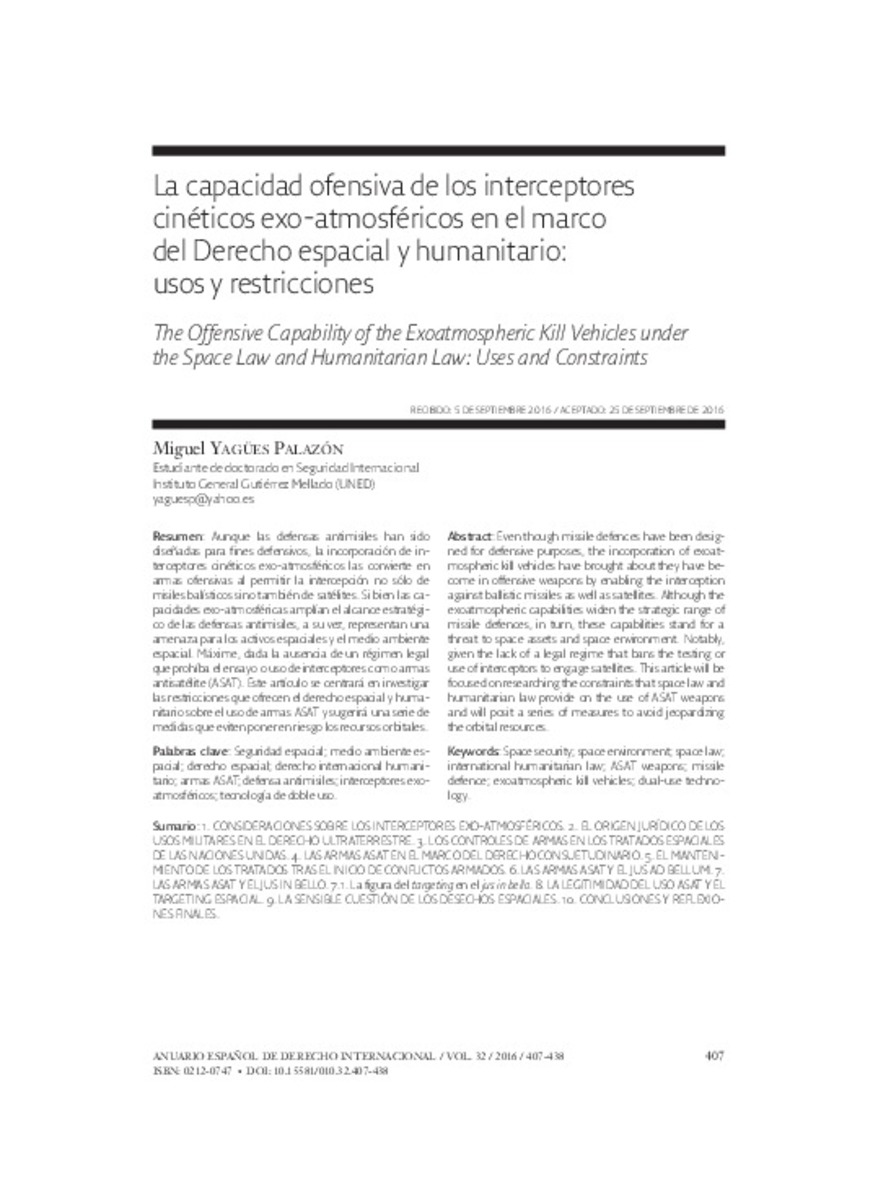La capacidad ofensiva de los interceptores cinéticos exo-atmosféricos en el marco del Derecho espacial y humanitario: usos y restricciones
Other Titles:
The Offensive Capability of the Exoatmospheric Kill Vehicles under the Space Law and Humanitarian Law: Uses and Constraints
Keywords:
Seguridad espacial
Medio ambiente espacial
Derecho espacial
Derecho internacional humanitario
Armas ASAT
Defensa antimisiles
Interceptores exo-atmosféricos
Tecnología de doble uso
Space security
Space environment
Space law
International humanitarian law
ASAT weapons
Missile defence
Exoatmospheric kill vehicles
Dual-use technology
Publisher:
Servicio de Publicaciones de la Universidad de Navarra
Citation:
Yagües-Palazón, M. (Miguel). "La capacidad ofensiva de los interceptores cinéticos exo-atmosféricos en el marco del Derecho espacial y humanitario: usos y restricciones". Anuario Español de Derecho Internacional. 32, 2016, 407 - 438
Statistics and impact
0 citas en

0 citas en

Items in Dadun are protected by copyright, with all rights reserved, unless otherwise indicated.







